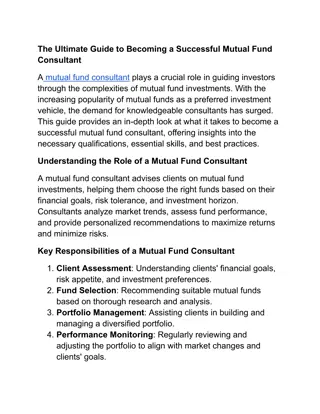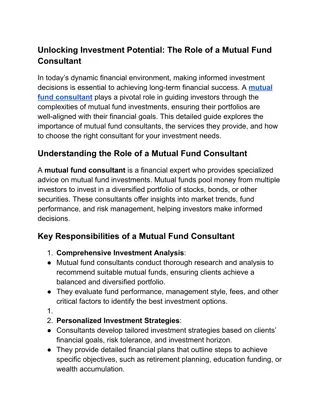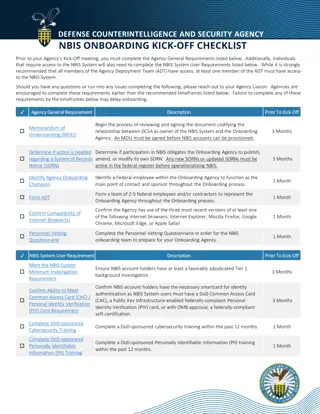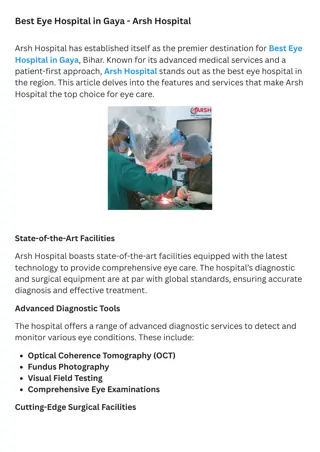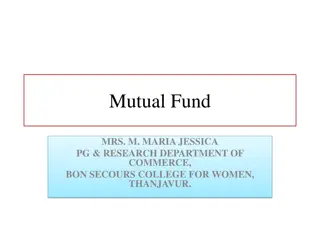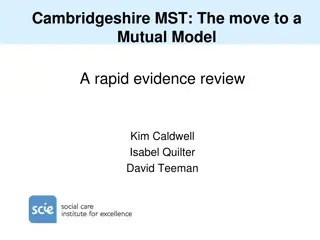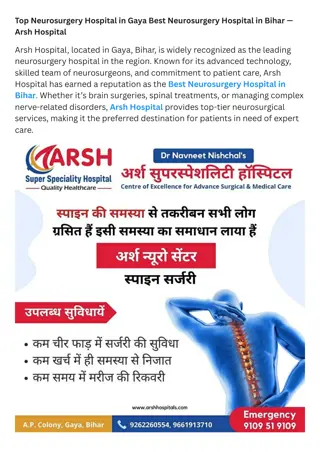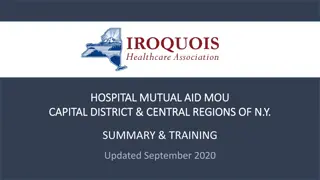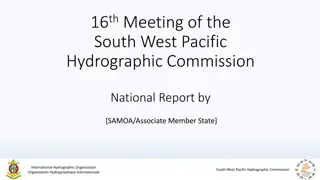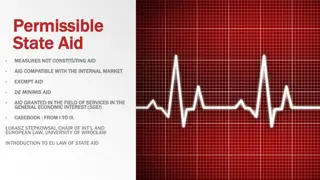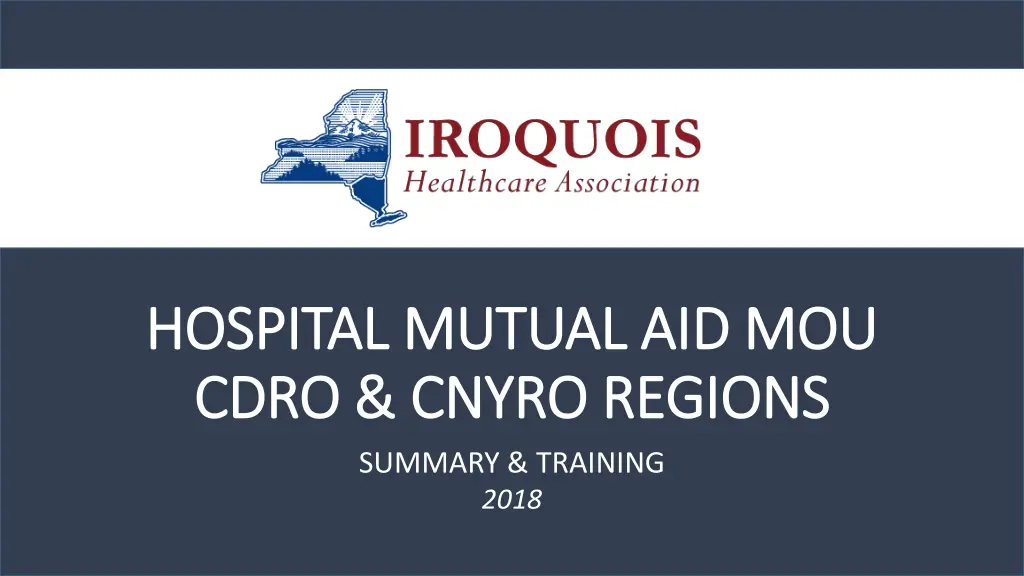
Mutual Aid MOU for Healthcare Emergency Preparedness
The Mutual Aid Memorandum of Understanding (MOU) supports continuity of care and medical surge capacity through mutual aid among hospitals in the Capital District Region (CDRO) and Central NY Region (CNYRO). It outlines resources, evacuation procedures, and communication protocols to ensure effective response during emergencies. Developed by the Iroquois Healthcare Association, the MOU emphasizes cooperative understandings, voluntary provision of aid, and integration of emergency management activities. Visit www.iroquois.org for more information.
Download Presentation

Please find below an Image/Link to download the presentation.
The content on the website is provided AS IS for your information and personal use only. It may not be sold, licensed, or shared on other websites without obtaining consent from the author. If you encounter any issues during the download, it is possible that the publisher has removed the file from their server.
You are allowed to download the files provided on this website for personal or commercial use, subject to the condition that they are used lawfully. All files are the property of their respective owners.
The content on the website is provided AS IS for your information and personal use only. It may not be sold, licensed, or shared on other websites without obtaining consent from the author.
E N D
Presentation Transcript
HOSPITAL MUTUAL AID MOU HOSPITAL MUTUAL AID MOU CDRO & CNYRO REGIONS CDRO & CNYRO REGIONS SUMMARY & TRAINING 2018
BACKGROUND The MOU has been signed by each of the 51 HPP grantee hospitals in the Capital District Region (CDRO) and Central NY Region (CNYRO) Health Emergency Preparedness Coalitions (HEPC); Developed by HEPC workgroups led by Iroquois Healthcare Association; Drafting process included review and input by hospital executives, emergency preparedness coordinators, legal counsel, risk management, et. al. Iroquois Healthcare Association | www.iroquois.org
PURPOSE & SCOPE The MOU is intended to support continuity of care and medical surge capacity through mutual aid consisting of: Resources including equipment, supplies and pharmaceuticals; Evacuation and transfer of patients; and Communication and information sharing. (Article I, Section 2) Iroquois Healthcare Association | www.iroquois.org
PURPOSE & SCOPE Reflects cooperative understandings when mutual aid is provided, describing information to be communicated and responsibilities relating to transportation, documentation, costs, insurance, and plan maintenance. Not intended to serve as an emergency operations plan or direct response functions. (Article I; Section 2). Provision of mutual aid is voluntary, however, once provided and accepted, the applicable provisions of the MOU shall be binding (Article III; Section 2). Iroquois Healthcare Association | www.iroquois.org
PURPOSE & SCOPE Ensures these understandings remain in effect through changes hospitals personnel or administration; Ensures that planning and response activities are properly integrated into jurisdictional emergency management; Provides accreditation agencies, state/federal agencies, et. al. with evidence of commitment to and coordination of emergency preparedness. (Article I, Section 1) Iroquois Healthcare Association | www.iroquois.org
PLANNING ASSUMPTIONS Applies basic emergency management planning assumptions, including that each hospital: Conducts an annual HVA upon which an EOP is adopted; Operates by direction of its EOP, and in coordination with those of its jurisdiction and HEPC; Has adopted NIMS and conducts implementation activities; Exchanges information and data necessary for situational assessment and resource identification; (Article I, Section 4) Engages in HEPC planning activities to ensure coordination of patient care. (Article I, Section 3 and 4) Iroquois Healthcare Association | www.iroquois.org
DEFINITIONS Lending Hospital Hospital that provides equipment, supplies and pharmaceuticals to a hospital impacted by a disaster. Partner Response Hospital Hospitals that execute this MOU. Receiving Hospital Hospital that accepts evacuated or transferred patients from a Transferring Hospital. Transferring Hospital Hospital impacted by a disaster, or anticipating a disaster, that requests its patients be transferred to another hospital(s). Regions 31 counties in CDRO & CNYRO Resources - Equipment, supplies and pharmaceuticals. May include staff and facilities necessary to assist with hospital evacuations and acceptance of transferred patients. Requesting Hospital A hospital impacted by a disaster, or anticipating a disaster, that requests equipment, supplies and pharmaceuticals. (Article II) Iroquois Healthcare Association | www.iroquois.org
PLAN MAINTENANCE The MOU does not have a termination or expiration date; remains applicable through changes in hospitals personnel or administration (Article I; Section 1.1). Modifications must be in writing and be signed by Partner Response Hospitals (Article III; Section 2.5). MOU shall be reviewed annually at first quarterly HEPC meetings to assess whether changes are required or additional arrangements needed with other hospitals, providers, suppliers, etc. (Article VIII; Section 1). Iroquois Healthcare Association | www.iroquois.org
PLAN MAINTENANCE Hospitals will educate and train appropriate staff how to request/receive resources, including proper procedures to follow, which personnel should make a request, whom to notify, and how to receive and financially account for donated resources. Training and exercising of this MOU will be executed annually (Article VIII; Section 2). Iroquois Healthcare Association | www.iroquois.org
MUTUAL AID REQUESTS May be initiated in response/anticipation of any event that may exceed resources or capabilities (Article IV, Sections 1- 2). Hospitals should exhaust internal resources and work through normal supply chains first (Article IV, Section 3.1). Requests may be made directly to another hospital or through county EM as appropriate. Hospitals should notify county EM and NYSDOH RO of such requests and of changes in status/resources which may effect how other incidents or resources are managed. (Article IV, Section 3.2) Iroquois Healthcare Association | www.iroquois.org
TRANSFER OF PATIENTS Information to be provided by Transferring Hospital includes: Number of patients by acuity level; Special needs (e.g. psychiatric, dialysis, airborne precautions); Staff, equipment and medications needed during transport and in the continuity of care; and Specific transportation needs for each patient and location of pick-up points. (Article V, Section 1) Iroquois Healthcare Association | www.iroquois.org
TRANSFER OF PATIENTS The Transferring Hospital is responsible for: Arrangement and cost of transporting patients; Providing patient information, medical records and insurance information to the Receiving Hospital; Tracking patients destinations. (Article V, Section 1.2) Iroquois Healthcare Association | www.iroquois.org
TRANSFER OF PATIENTS Transfer of responsibility for care occurs upon arrival at Receiving Hospital. Receiving Hospital will track incoming patients/medical records and promptly confirm arrival with Transferring Hospital. (Article V, Section 2) Upon Receiving Hospital s request, patients may be returned to Transferring Hospital, with exceptions as outlined. (Article V, Section 3) Iroquois Healthcare Association | www.iroquois.org
EQUIPMENT, SUPPLIES AND PHARMACEUTICALS The Requesting Hospital will identify: The quantity and exact type of requested resources; An estimate how soon and how long the resources are needed; and The location to which the supplies should be delivered. (Article VI; Section 1.1) Verbal requests must be followed with written communication to Lending Hospital s CEO using standard requisition forms. (Article VI; Section 1.2) Iroquois Healthcare Association | www.iroquois.org
EQUIPMENT, SUPPLIES AND PHARMACEUTICALS The Requesting Hospital is responsible for: Arrangement and cost of transportation (Article VI; Section 2.1); Examining resources, and assuring appropriate use, maintenance and safety (Article VI; Section 3.1); Returning or replacing resources, and paying costs incurred by the Lending Hospital (Article VI; Section 2.3, 3.4 and 5.1). Iroquois Healthcare Association | www.iroquois.org
EQUIPMENT, SUPPLIES AND PHARMACEUTICALS Lending Hospital is responsible for tracking resources through standard requisition forms. Requesting Hospital will confirm receipt, detailing item(s); condition (if applicable); and responsible parties. Upon return, Requesting Hospital s CEO or designee will co-sign the original forms and record the inventory s condition. (Article VI; Section 4.1 4.2) Receiving Hospital should rehabilitate durable resources or provide reimbursement for those costs. Unused non-durable resources will not be returned unless mutually agreed to. (Article VI; Section 5.2). Iroquois Healthcare Association | www.iroquois.org
INSURANCE/INDEMNIFICATION Insurance and indemnification provisions are outlined in Article VII; Section 1 and 2. Iroquois Healthcare Association | www.iroquois.org
QUESTIONS & COMMENTS ON REVISIONS If you have questions or comments regarding the MOU or suggested revisions, please contact: Andrew Jewett | Director, Hospital Preparedness Program Iroquois Healthcare Association, Inc. Tel: (315) 410-6470 | Email: ajewett@iroquois.org Website: www.iroquois.org/emergency-preparedness Iroquois Healthcare Association | www.iroquois.org





